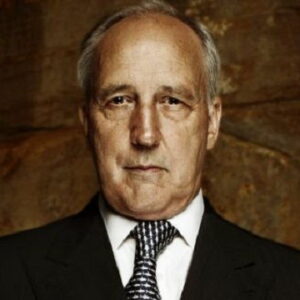Paul John Keating was Australia’s 24th Prime Minister. He was in charge from December 1991 to March 1996. He had been in politics for a long time before he was chosen as the Prime Minister. People in Australia say that the Keating government started a new era of economic growth that raised the standard of living for the people. Keating, who had been Treasurer before, had a big part to play in making the country’s financial system and economy what they are today. The very smart politician put in place policies to make Australia’s economy more competitive and less regulated. He has always been interested in politics, and he joined the parliament when he was only 25. This made him one of the youngest members of the federal parliament. During the Hawke Government, he was made the Treasurer, and he later ran against Hawke for the Labor leadership and won. After he became Prime Minister, he started a series of reforms that were meant to open up trade, regulate industries, and change the way taxes were done. After losing to John Howard in 1996, he gave up the job. After he left politics, he started a business that did well.
Early years and childhood
Matthew Keating and his wife Minnie had him. They were Irish Catholics. His father was a key member of the local Labor Party, and Paul took after his father’s interest in politics.
He went to De La Salle College and got his Intermediate Certificate there in 1958. But after he was 15, he stopped going to school and started working as a clerk for Sydney’s electricity authority.
He joined Young Labor, a group of young people who were interested in politics and met to talk about current political issues.
Paul Keating’s Career
As soon as he was old enough, he joined the Australian Labor Party (ALP). In 1966, he became the leader of the ALP Youth Council.
He met some of the most important politicians of the time, who helped him get the Labor Party’s support for the Blaxland seat and get elected to the House of Representatives in 1969.
In 1975, he joined the cabinet of Prime Minister Gough Whitlam as Minister for Northern Australia. Soon, in 1976, he was made a spokesman for the opposition, and he got a reputation for being a tough debater.
He was made President of the New South Wales Labor Party in 1981.
He became the Treasurer of Australia in 1983, when Bob Hawke was Prime Minister. He stayed in that job until 1991. He changed both the big and small parts of the economy. For example, he deregulated the financial sector, changed the way taxes were done and took down several trade barriers.
During the 1980s, Australia’s economy grew quickly, but by the end of the decade, inflation had reached 9 percent. When the country went through a recession in the 1990s, his policies came under fire. Keating defended himself by saying that the problem with inflation was solved by the recession.
In December 1991, he ran against Prime Minister Bob Hawke and beat him with 56 votes to 51. On December 20, 1991, he was sworn in as Australia’s 24th Prime Minister.
He kept going with the progressive changes he had started when he was Treasurer. He made changes to the job market and training to help Australia deal with its high unemployment rate at the time.
The Australian National Training Authority and a review of the Sex Discrimination Act are two of his most important accomplishments (ANTA). He was also very important in setting up the Asia-Pacific Economic Cooperation Forum (APEC).
In December 1992, he gave the famous Redfern Speech about making peace with Aboriginal people. People think that this speech is one of the best political speeches that has ever been given in Australia.
Keating wanted to build good relationships with countries in Asia, especially China, India, Malaysia, and Indonesia. He was also interested in making trade deals with these countries.
The Australian Labor Party lost in March 1996, and Keating gave up his job as Prime Minister. After he retired, he became a successful businessman and worked as a director for several different companies.
Works of note
As the 24th Prime Minister of Australia, Keating is credited with improving trade with nearby countries. He is also credited with raising the standard of living in the country through reforms in training, employment, deregulation, and taxation.
Awards & Achievements
Since 1975, every former Prime Minister of Australia has been made a Companion of the Order of Australia. In 1997, Keating was offered this honor, but he turned it down.
Personal History and Legacies
In 1975, he married a Dutch flight attendant named Annita van Iersel. They had four children together. In 1998, the couple broke up. Craig Knowles, who was a minister in the state of New South Wales, used to get advice from his daughter, Katherine Keating.
Estimated Net worth
Paul Keating is on the list of the most popular and wealthiest politicians. Based on what we’ve found on Wikipedia, Forbes, and Business Insider, Paul Keating’s net worth is about $1.5 million.
Trivia
This well-known Australian politician ran a rock band called The Ramrods when he was young.
He likes music and likes to collect old French clocks as a hobby.


